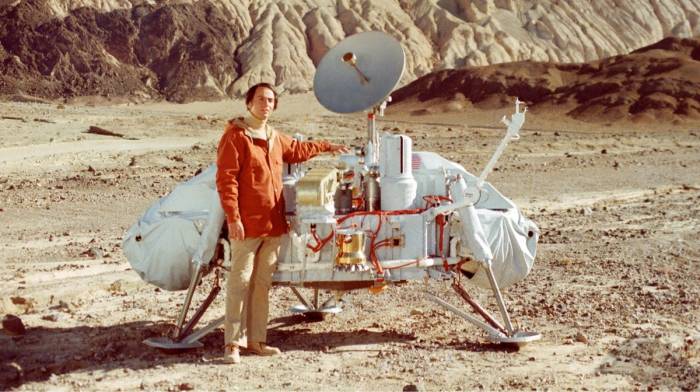Buckminster Fuller and the Ruins of the Future
An abandoned architectural gem speaks to us even today.
Built in one of the most inhospitable places in the deep south of Louisiana, the American equivalent of the Eiffel Tower, is a geodesic dome the size of a football stadium and capable of holding up to 36 train cars within it at one time. Inaugurated by its developers, Buckminster Fuller and a civil engineer named Dick Lehr, they planned the dome not only as a train yard but a symbol of the future rising some 120 feet to a height that seemed much more. Bigger on the inside than on the outside, it was full of new ways to solve old problems.
Just a few years after the completion of the million-dollar construction, the Union Tank Car had to close the dome, as the new standard measure for tank cars was modified. Fuller’s Louisiana half-sphere was then a difficult-to-access attraction, of no apparent cultural or historical interest. Allowed to rust, it was finally demolished in 2007.
The fascinating history of the Union Tank Car’s geodesic dome, and its twin in Wood River, Illinois, offers an example of architectural design in the late 1950s. This history is told, at last, in an extraordinary documentary: A Necessary Ruin: The Story of Buckminster Fuller and the Union Tank Car Dome.

At a half-hour long, the film follows Dick Lehr, the original designer of the rotating platform that would give practical sense to the construction, and a collaborator often invisible next to Fuller’s titanic figure. An obvious appreciation for Fuller’s work and innovations in the documentary questions how we collectively build the memory of our time through a relationship with urban and rural spaces, a space of imagination in which progress takes place, but also the great builder and destroyer of our era.
The eyes of photographers, Meg Holford and Ivan Massar, provide us a guided tour of the phases of the Alsen, Louisiana dome’s construction. From the technical details of the plans to the apocalyptic visions of rust and finally to its subsequent demolition. According to Ward Bond, who was interested in preserving the dome, to enter was like being “on the inside of a diamond.”
It was a diamond due to the hundreds of steel nodes that bore, with no apparent effort, the ten-ton plates above. The proper tension to produce lightness is one of the constants of Fuller’s geodesic domes. A visionary architect and designer, he believed buildings should show us, in their very presence, the possible futures that humanity desires. Despite his vision, the architecture of the time was unsustainable, in the sense that it needed maintenance every two or three decades. A terrible and enlightening reminder that the spaces we inhabit are also alive and they depend, like we do, on the dynamics of human interaction, and on the enjoyments of movement and rest, work, and leisure.

In contrast to the dome in Alsen, a few miles upriver, in Illinois, the twin dome remains in operation and owned by its original builders. Both domes raise the question of how we value structures built between the worlds of art and technique, between aesthetic enjoyment and progress. The intersections between human domains (relationships of dominion and collaborative relationships, like those used in Fuller’s geodesic designs), and that is, between inhabitants, users, workers, and visitors. These continuously change. They establish new patterns, and often leave towering ruins behind them, like the tail behind a comet of progress, eventually lost in a blind abyss.
*Images: 1) Wikimedia Commons; 2) Joseph Bergen – flickr / Creative Commons; 3) Maia Valenzuela – flickr / Creative Commons
Related Articles
7 Recommendations for Organizing Your Library
For the true bibliophile, few things are more important than finding a book from within your library.
Red tea, the best antioxidant beverage on earth
Red tea is considered to be the most unusual of teas because it implies a consistently different preparation process. ––It is believed that its finding came upon surprisingly when traditional green
A brief and fascinating tour of the world's sands
To see a World in a Grain of Sand And a Heaven in a Wild Flower, Hold Infinity in the palm of your hand And Eternity in an hour. - William Blake What are we standing on? The ground beneath our feet
Strengthen your memory with rosemary oil
For thousands of years rosemary oil has been traditionally admired and used due to its many properties. In the Roman culture, for example, it was used for several purposes, among them cleansing, as
Literature as a Tool to Build Realities
Alain de Botton argues that great writers are like lenses through which we can see an infinite array of possibilities.
Mandelbrot and Fractals: Different Ways of Perceiving Space
Mathematics has always placed a greater emphasis on algebra, a “purer” version of itself, one that is more rational at least. Perhaps like in philosophy, the use of a large number knotted concepts in
Luis Buñuel’s Perfect Dry Martini
The drums of Calanda accompanied Luis Buñuel throughout his life. In his invaluable memoirs, published under the Buñuel-esque title, My Last Sigh, an entire chapter is dedicated to describing a
A Brief Manual of Skepticism, Courtesy of Carl Sagan
Whether or not you’re dedicated to science, these tips to identify fallacies apply to any form of rigorous thinking.
How to Evolve from Sadness
Rainer Maria Rilke explored the possible transformations that sadness can trigger in human beings.
Alan Watts, A Discreet And Charming Philosopher Of The Spirit
British thinker Alan Watts was one of the most accessible and entertaining Western interpreters of Oriental philosophy there have been.










